Full title: What really counts – changes in ground beetle assemblages on the Keuperscharren in the Luxembourg and Bitburger Gutland since the nineteen-eighties
Abstract
 Twentieth century anthropogenic global change has already affected all of the earth biota. One-third to one half of earth’s ice free surface has been transformed by human land use. This land cover change represents the most important component of global change now, and will do so for the next decades to come.
Twentieth century anthropogenic global change has already affected all of the earth biota. One-third to one half of earth’s ice free surface has been transformed by human land use. This land cover change represents the most important component of global change now, and will do so for the next decades to come.
Especially for semi-natural grasslands in Central- Europe intensification or abandonment has resulted in a dramatic reduction of such habitats. The Keuperscharren in the Bitburger and Luxembourger Gutland present examples for the threat through abandonment. Because they are rated as historical dry grasslands (cultural-historical meaning), the Scharren in the Bitburger Gutland are protected by the Habitat Directive. This implies a prohibition of degradation for those sites.
To satisfy this claim, a fundamental knowledge of factors, influencing this habitat is vital. Carabid beetles can be used very well as indicator species to determine the stability or changes in habitats. Therefore, in this study, the factors determining stability or changes on the Keuperscharren should be defined, based on a habitat suitability model and autecological studies for the representative carabid species. Based on a microsatellite analysis, the effect of habitat fragmentation on the genetic interchange between the different sites and potential genetic depletion will be measured. Based on that knowledge, propositions for a customized management for such sites can be made. This will contribute vital information to fulfil the requirements of protecting those Keuperscharren as places with a cultural – historical meaning. Furthermore this study will provide valuable data for the endeavour to compile a Red List on the Ground beetles in Luxembourg or a Red List of the Rhine-Province.
Status of PhD
Supervisor at university: Prof. Dr. Roland Klein , FB VI Geography, faculty of biogeography, university of Trier.
Supervisor in Luxembourg: Marc Meyer, Musée National d´histoire naturelle Luxembourg.
PhD granted by Fonds national de la recherche Luxembourg. Duration: 3 years (01.09.2009 – 31.08.2012).
Host institution: Fondation faune-flore @ Centre de recherche scientifique, Musée national d’histoire naturelle.
Contact
Dipl. Biogeogr. Bettina Augenstein
Musée national d’histoire naturelle
Centre de recherche scientifique
Laboratoire/Section Zoologie des invertébrés
24, rue Münster
L-2160 Luxembourg
bettina.augenstein@mnhn.lu
Publications and not published works
- Augenstein B (2007) Laufkäferzöbnosen in Weinbergsbrachen als Nahrungsgrundlage für das Große Mausohr. Dipl. Thesis. (pages? University?)
- Habel JC, Augenstein B, Nève G, Rödder D (2010) Population genetics and ecological niche modelling reveal high fragmentation and potential future extinction of the endangered relict butterfly Lycaena helle. In: Habel JC, Assmann T (Eds.) (2010) Relict Species. Phylogeography and Conservation Biology. XV, 449 p. ISBN: 978-3-540-92159-2.
- Schmitt T, Augenstein B, Finger A (2008) The influence of viniculture and its fallow stages on the butterfly diversity in a wine growing region of southwestern Germany. European Journal of Entomology 105: 249-255.
Talks and poster presentations
- Augenstein B (?) Laufkäferzönosen auf Weinbergslagen als Nahrungsgrundlage für Myotis myotis. Talk, annual meeting, Landesfachausschuss Fledermausschutz. (Where?)
- Augenstein B (?) Anwendung und Funktionsweise von Ökologischen Nischenmodellen. Talk, annual meeting, Gesellschaft für Angewandte Carabidologie. (Where?)
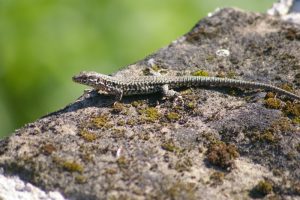 The common wall lizard is a warmth – loving species which is mainly spread in the Mediterranean area. Its northern area of circulation spreads over the north of France, Luxembourg, along the Maas in Belgium, the south of the Netherlands (with the northernmost existing population in Maastricht), scattered appearances in the Eifel area and the Rhine area as far as Bonn. In its northern area of circulation there are probably the following two subspecies: Podarcis muralis brogniardi in the northern Eifel area and the Vennvorland as well as Podarcis muralis merremia at the Rhine and the Moselle.
The common wall lizard is a warmth – loving species which is mainly spread in the Mediterranean area. Its northern area of circulation spreads over the north of France, Luxembourg, along the Maas in Belgium, the south of the Netherlands (with the northernmost existing population in Maastricht), scattered appearances in the Eifel area and the Rhine area as far as Bonn. In its northern area of circulation there are probably the following two subspecies: Podarcis muralis brogniardi in the northern Eifel area and the Vennvorland as well as Podarcis muralis merremia at the Rhine and the Moselle.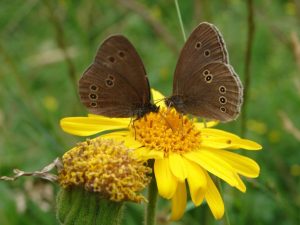

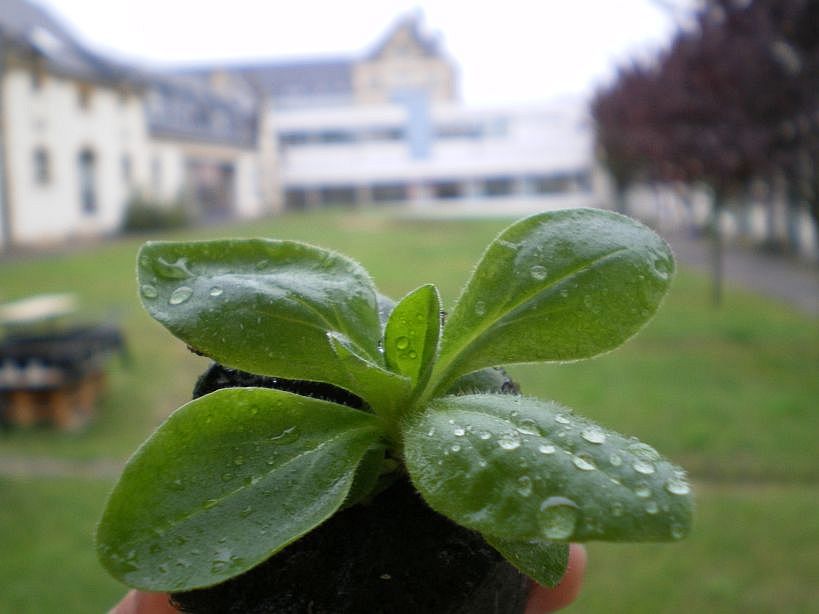

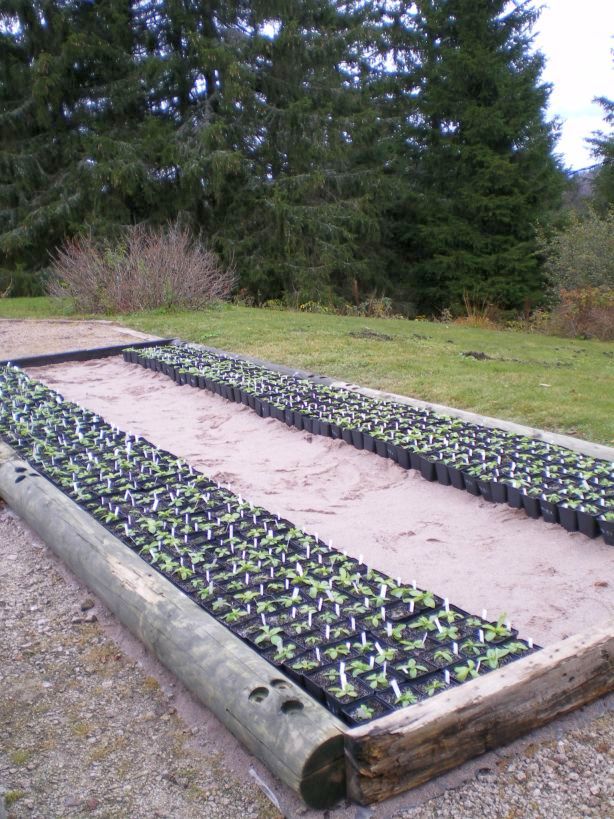
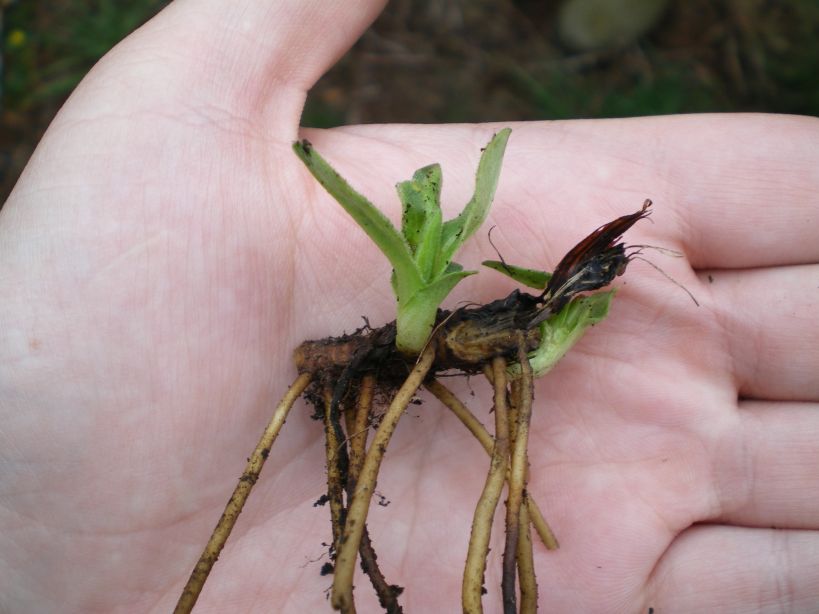
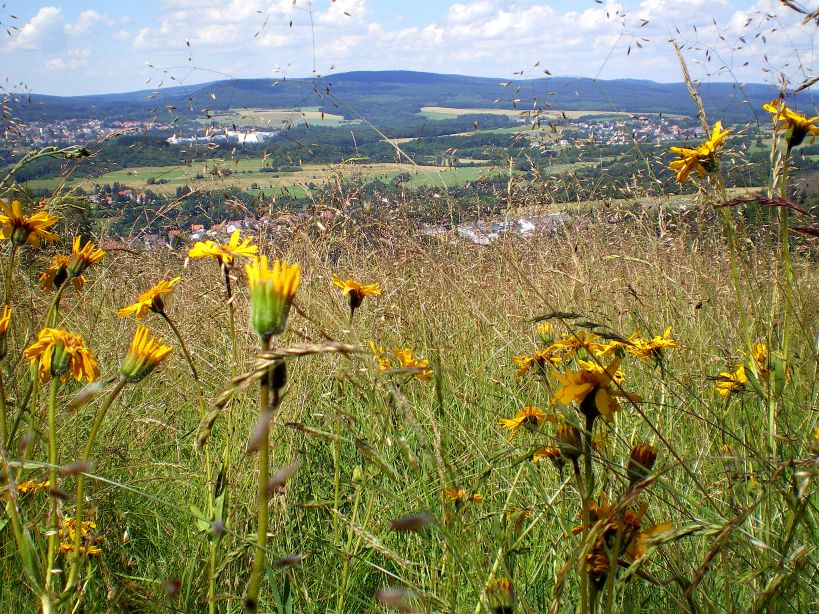
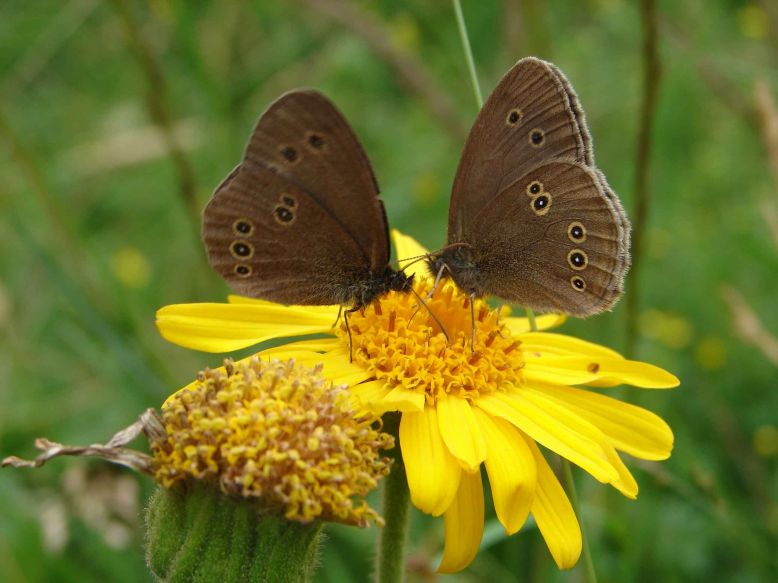
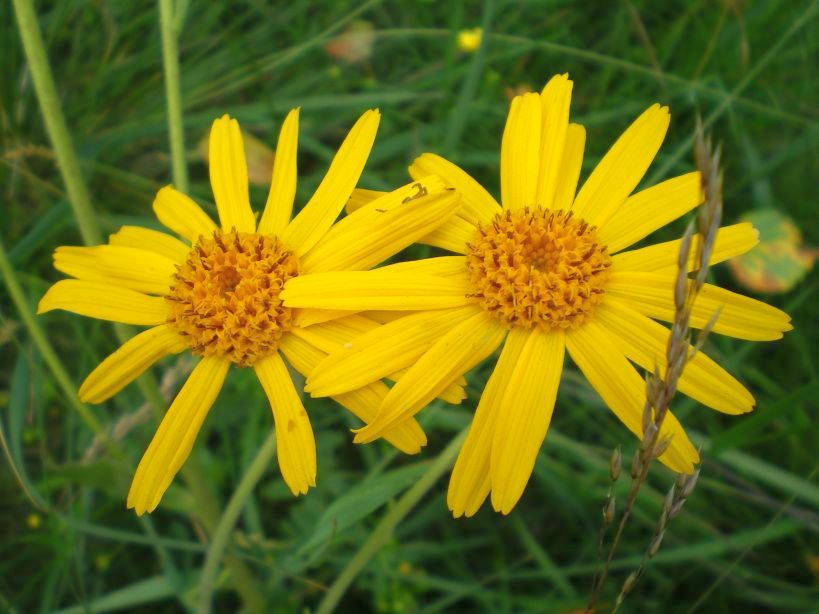
 Habitat fragmentation and habitat deterioration are considered to be the major reasons for the decline in the number of populations of many plant species, which are now often threatened with local extinction. Today, nutrient-poor calcareous grasslands are among the most threatened habitat types and often exist only as remnant islands in a matrix of unsuitable environment.
Habitat fragmentation and habitat deterioration are considered to be the major reasons for the decline in the number of populations of many plant species, which are now often threatened with local extinction. Today, nutrient-poor calcareous grasslands are among the most threatened habitat types and often exist only as remnant islands in a matrix of unsuitable environment.
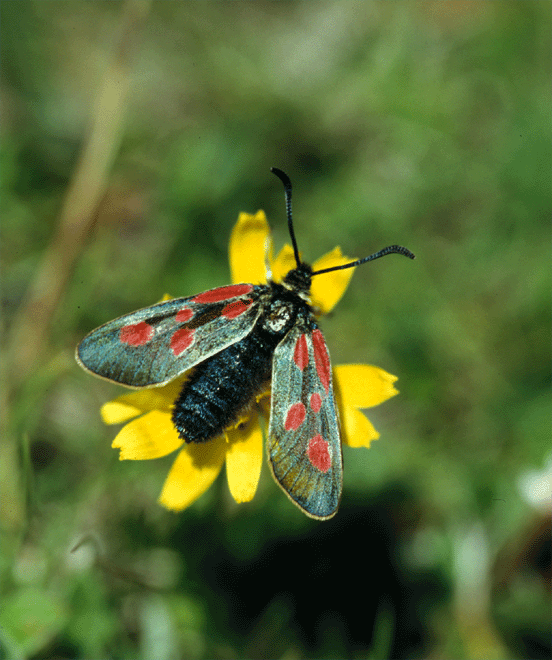
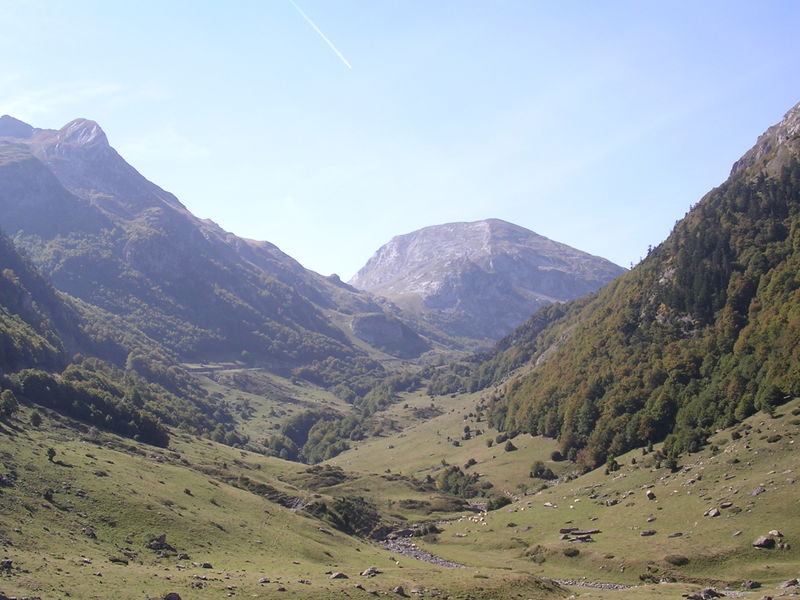

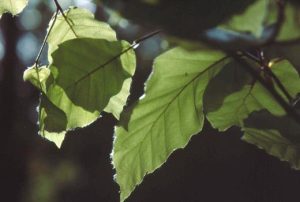 (1) The past few years have seen the completion of 14.000 relevés of dry site, near-natural forests, all commissioned by the Luxembourg forest administration (Administration des eaux et forêts). In the first project phase these data will be complemented by material from our own relevés as well as from relevés performed in the course of other studies in order to create a complete survey of all forest plant communities in Luxembourg. The results will be published in a monography coedited by the Musée national d’histoire naturelle and the Administration des eaux et forêts.
(1) The past few years have seen the completion of 14.000 relevés of dry site, near-natural forests, all commissioned by the Luxembourg forest administration (Administration des eaux et forêts). In the first project phase these data will be complemented by material from our own relevés as well as from relevés performed in the course of other studies in order to create a complete survey of all forest plant communities in Luxembourg. The results will be published in a monography coedited by the Musée national d’histoire naturelle and the Administration des eaux et forêts.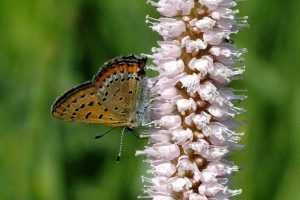 The butterfly species Lycaena helle and Parnassius apollo show similar distribution situations. L. helle represents a boreomontaneous species, which showed its maximal distribution over Europe during the early postglacial. Because of the climatic changes during the last thousands of years, this species extinct in most of the earlier distribution area in central Europe. Today, large populations are located in Scandinavia and the high European mountains, while some relict populations still exist in Europe (e.g. Ardennes, Eifel, Hohes Venn and Westerwald). The xeromontaneous butterfly species P. apollo shows similar distribution history like L. helle. That species is present over most parts of Scandinavia and the Alps and disappeared from most historical habitats in central Europe.Some relict populations (e.g. in the Mosel valley) are recently in a stable and vitale stage, which represent mostly subspecies. Both species are selected to test phylogeographic and nature conservation genetic scenarios. Modern moleculargenetic markers enable to analyse the genetic structure over the European distribution area (molecular taxonomy, phylogeography and molecular biogeography) as well as conservation genetic aspects (habitat isolation, minimum viable population size, genetic depressions) in a smaller spacial scale. The selected molecular markers (detection of mikrosatellite-DNA and sequencing of mtDNA) enable us to analyse individuals, collected in earlier times. With the subspecies P. apollo viningensis, a genetic time series over the last decades will show us potential genetic depressions during the 70s; during this periode many populations of this species declined because of the intensive use of pesticides, which could lead to population bottlenecks. In the case of P. apollo vinningensis, morphometric analyses (fluctuating assymetry) will complete and verify our genetic data set.
The butterfly species Lycaena helle and Parnassius apollo show similar distribution situations. L. helle represents a boreomontaneous species, which showed its maximal distribution over Europe during the early postglacial. Because of the climatic changes during the last thousands of years, this species extinct in most of the earlier distribution area in central Europe. Today, large populations are located in Scandinavia and the high European mountains, while some relict populations still exist in Europe (e.g. Ardennes, Eifel, Hohes Venn and Westerwald). The xeromontaneous butterfly species P. apollo shows similar distribution history like L. helle. That species is present over most parts of Scandinavia and the Alps and disappeared from most historical habitats in central Europe.Some relict populations (e.g. in the Mosel valley) are recently in a stable and vitale stage, which represent mostly subspecies. Both species are selected to test phylogeographic and nature conservation genetic scenarios. Modern moleculargenetic markers enable to analyse the genetic structure over the European distribution area (molecular taxonomy, phylogeography and molecular biogeography) as well as conservation genetic aspects (habitat isolation, minimum viable population size, genetic depressions) in a smaller spacial scale. The selected molecular markers (detection of mikrosatellite-DNA and sequencing of mtDNA) enable us to analyse individuals, collected in earlier times. With the subspecies P. apollo viningensis, a genetic time series over the last decades will show us potential genetic depressions during the 70s; during this periode many populations of this species declined because of the intensive use of pesticides, which could lead to population bottlenecks. In the case of P. apollo vinningensis, morphometric analyses (fluctuating assymetry) will complete and verify our genetic data set. Erstmalig wird ein Überblick über die Graslandvegetation Luxemburgs erstellt. Hierzu wird sämtliches vorhandene Datenmaterial ausgewertet und synthetisiert. Eventuell identifizierte Lücken werden durch zusätzliche Erhebungen geschlossen.
Erstmalig wird ein Überblick über die Graslandvegetation Luxemburgs erstellt. Hierzu wird sämtliches vorhandene Datenmaterial ausgewertet und synthetisiert. Eventuell identifizierte Lücken werden durch zusätzliche Erhebungen geschlossen.